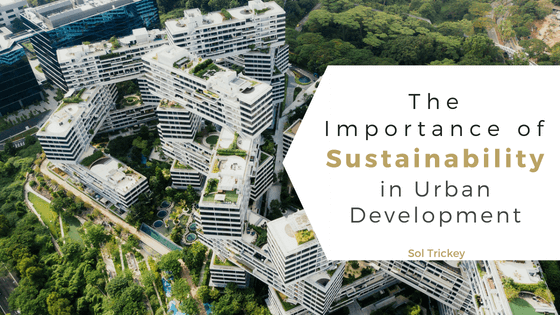Sustainability. It’s a term that gets tossed around a lot as society shifts their focus from the present to the future. Articles about eco-friendly products and agricultural advancements flood the internet on a daily basis. But what about property development? What does sustainability mean for the future of our cities?
A 1987 United Nations report defined sustainability as “development that meets the needs of the present without compromising the ability of future generations to meet their own needs.” By this definition, sustainability and urban development are uniquely intertwined.
Individuals are flocking to cities in crowds as populations continue to increase and diverse culture ascends to its rightful place of importance. The influx of people translates to a direct need for an influx of housing and amenities. As land developers, it is our job to try and meet these needs while keeping in mind the longevity of the city in which we work.
Yes, sustainable development includes the often-stereotyped green buildings, but it also includes discussions on a wide range of other topics like climate change and economic growth. The two are closely related, which means tougher planning processes, extended critical thinking sessions, and a stronger sense of where we are headed as a whole.
Now, rather than constructing a building for an immediate need, we are constructing buildings to address future needs. We must consider the physical presence, economic impact, social and political implications, and environmental influence of each project we undertake.
Urban planners and land developers play a significant role in ensuring that we aren’t destroying our chance at long-term livability. Just because a resource is available to us now, does not mean that it will be available to us always. Thinking about the diminishing health of our environments now can help to protect our beloved cityscapes later on.
According to the World Green Building Council, “the building sector has the largest potential for significantly reducing greenhouse gas emissions compared to other emitting sectors.” In addition, a green building can value on average 7% higher than an ordinary structure. Those two facts alone indicate a major opportunity for positive environmental and economic change as we move towards the future of Urban Development.
It’s important to note that we, as critical drivers of sustainable urbanism, are not limited to new structures. It is our responsibility to think about the properties that already exist. Can we revitalize these places? If we can’t, do we need to adjust our current infrastructure so that we don’t have to face this problem again?
We must embrace our future by planning and developing spaces in such a way that they are both innovative and practical. Taking steps towards a positive city environment now will benefit our cities, and our projects within them, for years to come.
